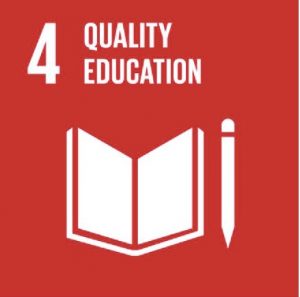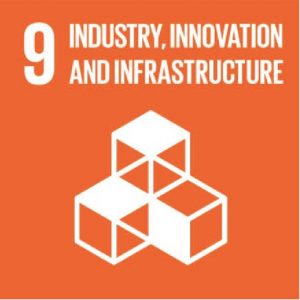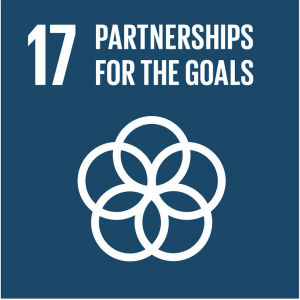Introduction
This blog shares the GSMA’s journey of creating the Mobile Internet Skills Training Toolkit (MISTT). It emphasises why developing and delivering contextually specific training in basic mobile internet skills can be beneficial to your audiences and for your company’s objectives.
If you plan to customise and localise the MISTT, we highly recommend that you read the accompanying ‘How to Guide’, which will support the development of training modules and resources that are specific to your audiences. Alternatively, if you lack the resources, you could translate the training modules as they stand into local languages.
The MISTT is an open source document that can be downloaded or printed. To reuse, host or access the source files please contact us at: [email protected].
Background
In November 2014 the GSMA published the Digital Inclusion report that identified four barriers to increasing mobile internet adoption and usage: network coverage, affordability, digital skills and locally relevant content. The GSMA Connected Society Programme aims to address these barriers and support mobile network operators and the broader ecosystem to expand global connectivity.
Our work on content began with a series of regional reports that aimed to highlight the barriers to the creation, and usage, of local mobile content – with a particular focus on the role of the mobile network operators. In May 2015, as part of our research for the Asia report, the first in the series, we went to India to meet end-users and ask them what they currently used, wanted and needed from mobile internet content, in order to establish a baseline of consumer needs in the region.
It quickly became clear that locally relevant content, mobile internet awareness and digital skills were intrinsically linked. On its own, an increase in locally relevant content won’t drive engagement with the mobile internet if people don’t have the skills to access and use it. Equally if people do not understand the fundamental benefits the mobile internet can bring to their lives, whether it be searching for jobs or health information, or just watching a music video, they will not be motivated to learn how to use it.
This realisation gave birth to the idea of a Mobile Internet Skills Training Toolkit (MISTT), aimed at helping the mobile networks operators (MNOs), Non-Governmental Organisations (NGOs), development organisations and Governments, demonstrate to end-users the value of accessing the mobile internet.
Through our research, we garnered essential information about users with little or no mobile internet skills or experience, which helped us create a framework for the MISTT. On our travels in urban, peri-urban and rural environments within India, most people we met had heard of the mobile internet, and aspired to own a smartphone, if they didn’t own one already. Additionally, some that did already own a smartphone, didn’t use it for internet access
We grouped the people we met into to two segments; urban, low-income users mainly had high levels of awareness of the mobile internet with a good understanding of its benefits, but low levels of access to a smartphone, and low levels of digital skills.
The rural, low -income users, mainly had minimal awareness and understanding of the practical and safety aspects of the internet and lacked digital skills. They were often aware of the entertainment value of the mobile internet, but this was frequently seen as
irrelevant to their lives.
Why India?
Mobile is the primary way the majority of internet users in India get online. There are currently 412 million people in India (or 31.2% of the population) subscribing to the internet via their mobile phone. GSMA Intelligence forecasts that by 2020, there will be 668 million mobile internet subscribers via mobile phones (47.8% of the Indian population) . Our research in India demonstrated that there was a need for a tool that helped people to understand the benefits and value of the internet and taught them how to responsibly and safely use services.
The Indian government has also recognised the potential of digital technology to address some of the social and economic challenges within the country and, consequently, launched the Digital India campaign. This aims to transform India into a digitally empowered society and knowledge economy, with a particular focus on improving digital literacy through its National Digital Literacy Mission (NDLM). This aims to provide ICT training to 1 million people, in its first phase, and train at least one person per household with critical digital skills by 2020. The NDLM definition of digital literacy is: “digital literacy is the ability of individuals and communities to understand and use digital technologies for meaningful actions within life situations”.
Due to the potential impact, clear market need, government buy-in and the insights and connections we had already developed, we decided that India would be the ideal pilot country for the Mobile Internet Skills Training Toolkit.
Below the GSMA depicts the four stages of literacy. The focus on our toolkit is an introduction to steps three and four, Mobile Internet Literacy and Advanced Mobile Internet Literacy
Building the Mobile Internet Skills Training Toolkit
Design
To develop the MISTT we engaged 2CV Ltd, a London-based consumer research company, with extensive experience of working in India, the mobile sector, and user-centred design. Their expertise enabled us to build an initial framework for the MISTT and an accompanying “How to Guide” (HTG) which can be used to support customisation in different markets. We assessed, tested and reviewed these tools with our mobile industry partners, Idea Cellular and Telenor India, and with other industry experts, such as Dalberg, FemTech, Google, Go- ON UK, Intel, Mozilla, Silvertraining UK, and ICT4D, gender and digital development specialists.
Our aim in engaging with all these stakeholders was to create the principles that informed our approach to build the foundations of the training. We also wanted to put together theories and hypothesis that we could test with real life users who had little or no internet skills. This consultation process meant we were confident we had built a credible prototype that we could test in the field.
Focus Groups
In November 2015, we headed to India with 2CV Ltd to meet their local partner Point of View Research to conduct focus groups to test our prototype. We held 6 focus groups, comprising of men and women aged 20 – 50 years, from rural, peri-urban or urban environments who were either feature phone or smartphone users, and either non-users of the mobile internet or low level users of the mobile internet.
Our aim was to garner understanding of the needs and challenges of using the mobile internet, in order to contextualise the toolkit and further explore the barriers, motivations and expectations people have whilst using the mobile internet, to ensure we could appropriately align the toolkit with peoples’ interests. Finally, we wanted to test user experience and comprehension of specific modules and activities we had created. These focus groups enabled us to gather learnings around these areas and refine the modules ahead of live testing workshops.
Live Testing
Our partners for the live workshop testing of the MISTT were the Digital Empowerment Foundation (DEF), an Indian NGO that works with underserved communities to bridge the digital divide. DEF contributed further to our expert interview process, sharing their knowledge and expertise of working within underprivileged communities across India. They also brought a range of participants from their communities for the live testing workshops.
For the live testing, we spent three days at a government facility in Maharashtra, India, with over 65 men and women of differing mobile internet experience and socio-economic backgrounds, from the DEF community. Our trainers included DEF community workers, and several trainers from our mobile partners Idea Cellular and Telenor India.
In order to ensure that trainers had the right tools and resources to demonstrate the value and functionality of the internet on a mobile phone, we arranged a ‘train the trainer’ session, to test the framework and modules of the MISTT. This was followed by live testing workshops with the trainers and participants to test the modules and training materials were practical and easy to understand.
Over the 2-day, live testing workshops we split our participants up by gender and then into smaller groups of no more than 6, sharing 2 phones, with a dedicated trainer per group. We had a lead trainer positioned in the room to make sure that we ran to schedule and could drive discussion above peoples’ wants and needs from the mobile internet as well as testing the modules and learning materials, whilst observing how people like to learn.
The time spent with our participants and trainers was invaluable to test the validity and usefulness of the MISTT and learn what people really wanted from their training resources. This allowed us to further refine the MISTT. For example, we found that people responded best to learning about the mobile internet with visual aids so we have ensured that the toolkit has lots of posters, icon pictures and hand-outs that can be easily printed out.
The final product
The MISTT has been developed for MNOs, NGOs, Development Organisations and Governments who want to provide training to improve people’s basic knowledge and understanding of the mobile internet. It provides an introduction to using the mobile internet on an entry level smartphone through three services: WhatsApp, YouTube and Google, with information about safety and cost included throughout. This framework guides the overall flow of the toolkit, but it has been designed so that each training session can stand alone. This allows the trainer to choose which session to use depending on what is relevant to their target audience.
In recognition of the varying amounts of time that different types of organisations have with people, we designed two types of module. For organisations with less time (e.g. MNOs), we created ‘bitesize’ modules which outline the basic functionality and benefits of using a particular service in 2-3 minutes. Here you can choose from 6 sessions:
 |
Introduction to the Internet |
 |
|
 |
YouTube |
 |
|
 |
Safety & Cost |
For those with more time (e.g. NGOs), we designed ‘in depth’ modules, where the same 3 services were taught over 45-60 minutes. The cost and safety components were included in each of the 3 modules as these functions differ with each service.
Although this toolkit has been tailored for people in Maharashtra State, India, we are confident that it will have relevance in the rest of the country. There are also opportunities globally for it to be further localised and customised using the accompanying ‘How To Guide’.
We have created English and Hindi versions of the MISTT.
Research and Design Process
Below are the steps we followed to develop the MISTT. Which will help organisations understand their audience’s needs and create a relevant toolkit for their markets
1. SCOPE
• Research was conducted on mobile internet barriers and opportunity to address the digital skills barrier in May 2015
• We identified target audience and mapped these against the GSMA Stages of Literacy journey
2. UNDERSTAND
• We conducted a review on current solutions addressing digital skills
• We engaged with local and global experts for knowledge and expertise sharing
• We built foundations and principles for the MISTT
3. DESIGN AND CREATE
• We defined and tested content in India November 2015
• We worked to understand the best way to engage with target audience
• We developed and refined content and resources
4. TEST AND DELIVER
• We conducted live testing workshops
• We ran the How to Design Your Own Pilot workshop
5. EVALUATE AND REFINE
• We will monitor impact and assess the improvement in mobile internet skills
• The MISTT is a living document and we will continue to refine it
Sustainable Development Goals
We believe the MISTT will support the mobile industry to deliver on three of the Sustainable Development Goals:
 Quality Education – Ensure inclusive and equitable quality education and promote lifelong learning opportunities for all
Quality Education – Ensure inclusive and equitable quality education and promote lifelong learning opportunities for all
 Industry Innovation and Infrastructure – Build resilient infrastructure, promote inclusive and sustainable industrialisation and foster innovation
Industry Innovation and Infrastructure – Build resilient infrastructure, promote inclusive and sustainable industrialisation and foster innovation
 Partnership for the Goals – Strengthen the needs of implementation and revitalise the global partnership for sustainable development
Partnership for the Goals – Strengthen the needs of implementation and revitalise the global partnership for sustainable development


